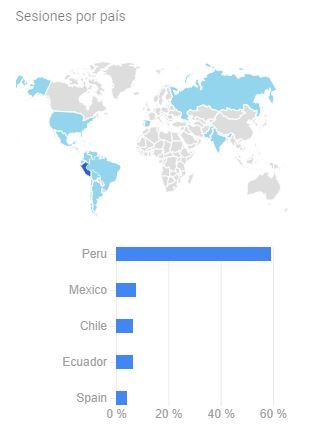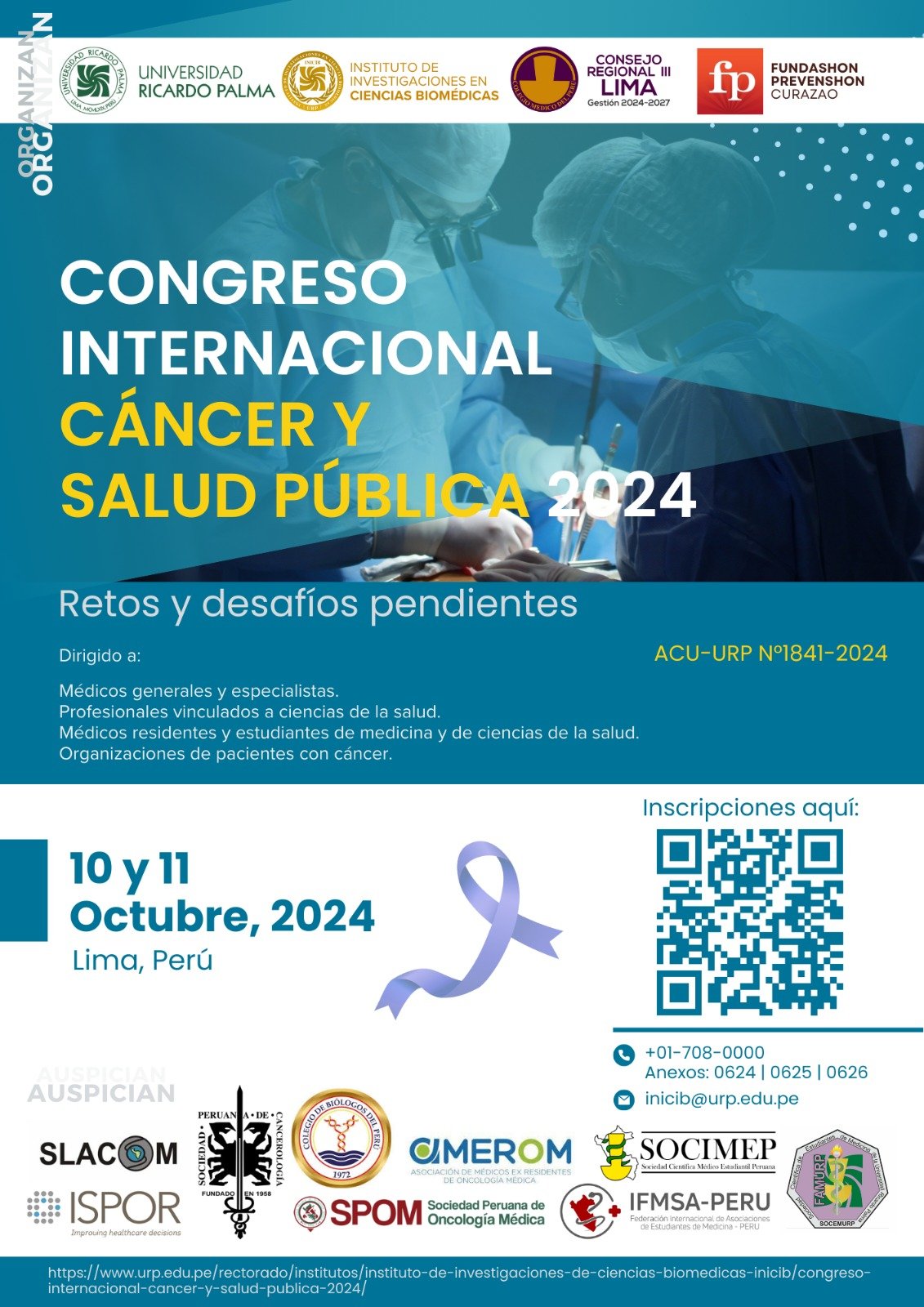Analysis of Adverse Drug Reactions caused by antipsychotic drugs in a Mexican health institute
Análisis de Reacciones Adversas a Medicamentos por fármacos antipsicóticos en un instituto de salud mexicano
DOI:
https://doi.org/10.25176/RFMH.v24i1.6060Keywords:
Adverse drug reactions, Antipsychotic agents, Seriousness, Severity, CausalityAbstract
Introduction: Adverse Drug Reactions (ADRs) are unwanted clinical or laboratory manifestations that are related to drug use. ADRs are common and are associated with significant risk of morbidity, mortality and hospital admissions. Antipsychotics have a reduced therapeutic window, and have been related to the manifestation of a variety of ADRs. Objective: To evaluate the pattern of ADRs due to antipsychotic drugs detected in patients treated at the Ramón de la Fuente Muñiz National Institute of Psychiatry between December 2021 and May 2022. Methods: Observational, descriptive, prospective and cross-sectional study of a series of cases. The seriousness, severity, and quality of the information in the notification of the ADRs were defined in accordance with “NOM-220-SSA1-2016, Installation and Operation of Pharmacovigilance”, while causality was determined using the Naranjo algorithm. Results: The incidence of ADRs was 59%, with one or more ADRs detected in 52 of the 88 patients who were receiving antipsychotic treatment during the study period. Forty-five percent of the ADRs had "probable" causality and 55% "possible"; only three ADRs were classified as serious as they prolonged the hospital stay and endangered the patient's life. Conclusions: The ADRs of the gastrointestinal and endocrine systems were the most incidental, with hyperprolactinemia being the most frequent. Olanzapine and clozapine were the medications that caused the most ADRs. It is recommended to promote the culture of notification and follow-up of ADRs caused by antipsychotic drugs.
Downloads
References
Basile AO, Yahi A, Tatonetti NP. Artificial Intelligence for Drug Toxicity and Safety. Trends Pharmacol Sci. 2019 [Acceso 05/05/2023];40(9):624–35. Disponible en: https://www.cell.com/trends/pharmacological-sciences/fulltext/S0165-6147(19)30142-7
AMNAT. Glosario de Farmacovigilancia [Internet]. Argentina.gob.ar [Acceso 17/10/2023]. Disponible en: https://www.argentina.gob.ar/anmat/farmacovigilancia/glosario
Alomar M, Tawfiq AM, Hassan N, Palaian S. Post marketing surveillance of suspected adverse drug reactions through spontaneous reporting: current status, challenges and the future. Ther Adv Drug Saf. 2020 [Acceso 21/03/2023];11:2042098620938595. Disponible en: https://journals.sagepub.com/doi/full/10.1177/2042098620938595
Patton K, Borshoff DC. Adverse drug reactions. Anaesthesia. 2018 [Acceso 29/03/2023];73:76–84. Disponible en: https://doi.org/10.1111/anae.14143
Fossouo Tagne J, Yakob RA, Dang TH, Mcdonald R, Wickramasinghe N. Reporting, monitoring, and handling of adverse drug reactions in Australia: scoping review. JPH. 2023 [Acceso 29/03/2023];9:e40080. Disponible en: https://publichealth.jmir.org/2023/1/e40080
Beninger P. Pharmacovigilance: An Overview. Clin Ther. 2018 [Acceso 29/03/2023];40(12):1991–2004 Disponible en: https://www.clinicaltherapeutics.com/article/S0149-2918(18)30317-5/fulltext
Bangwal R, Bisht S, Saklani S, Garg S, Dhayani M. Psychotic disorders, definition, sign and symptoms, antipsychotic drugs, mechanism of action, pharmacokinetics & pharmacodynamics with side effects & adverse drug reactions: Updated systematic review article. JDDT. 2020[Acceso 29/03/2023];10(1):163-172. Disponible en: https://jddtonline.info/index.php/jddt/article/view/3865
Ambwani S, Dutta S, Mishra G, Lal H, Singh S, Charan J, et al. Adverse Drug Reactions Associated With Drugs Prescribed in Psychiatry: A Retrospective Descriptive Analysis in a Tertiary Care Hospital. 2021 [Acceso 29/03/2023];13(11):e19493. Disponible en: https://assets.cureus.com/uploads/original_article/pdf/74029/20211210-17355-1d4vjnu.pdf
Minjon L, Brozina I, Egberts TC, Heerdink ER, van den Ban E. Monitoring of adverse drug reaction-related parameters in children and adolescents treated with antipsychotic drugs in psychiatric outpatient clinics. Front Psychiatry. 2021 [Acceso 29/03/2023];12:640377. Disponible en: https://www.frontiersin.org/articles/10.3389/fpsyt.2021.640377/full
FACMED. Instituto Nacional de Psiquiatría Ramón de la Fuente Muñiz [Internet]. Feria Stands [Acceso 17/10/2023]. Disponible en: http://www.ferialibrosalud.facmed.unam.mx/index.php/project/instituto-nacional-de-psiquiatria-ramon-de-la-fuente-muniz/
INPRFM. Instituto Nacional de Psiquiatría [Internet]. INPRFM [Acceso 17/10/2023]. Disponible en: https://inprf.gob.mx/faqs.html
Secretaría de Salud. Norma Oficial Mexicana NOM-220-SSA1-2016, Instalación y operación de la farmacovigilancia [Internet]. DOF [Acceso 16/02/2023]. Disponible en: https://dof.gob.mx/nota_detalle.php?codigo=5490830&fecha=19/07/2017#gsc.tab=0
Carmona-Huerta J, Castiello-De Obeso S, Ramírez-Palomino J, Duran-Gutiérrez R, Cardona-Muller D, Grover-Paez F, et al. Polypharmacy in a hospitalized psychiatric population: Risk estimation and damage quantification. BMC Psychiatry. 2019 [Acceso 21/03/2023];19(1):1–10. Disponible en: https://bmcpsychiatry.biomedcentral.com/articles/10.1186/s12888-019-2056-0
Chawla S, Kumar S. Adverse drug reactions and their impact on quality of life in patients on antipsychotic therapy at a tertiary care center in Delhi. Indian J Psychol Med. 2017 [Acceso 29/03/2023];39(3):293-298. Disponible en: https://journals.sagepub.com/doi/pdf/10.4103/0253-7176.207332
Seeman MV. The pharmacodynamics of antipsychotic drugs in women and men. Front psychiatry. 2021 [Acceso 29/03/2023];12:468. Disponible en: https://www.frontiersin.org/articles/10.3389/fpsyt.2021.650904/full?ref=damahealth.com
Ruljancic N, Bakliza A, Pisk SV, Geres N, Matic K, Ivezic E, et al. Antipsychotics-induced hyperprolactinemia and screening for macroprolactin. Biochem Medica [Internet]. 2021 [Acceso 29/03/2023];31(1):113–20. Disponible en: https://hrcak.srce.hr/252086
Chanson P. Treatments of psychiatric disorders, hyperprolactinemia and dopamine agonists. Best Pract. Res. Clin. Endocrinol. Metab. 2022 [Acceso 28/03/2023];36(6):101711. Disponible en: https://www.sciencedirect.com/science/article/pii/S1521690X22000987
Lu Z, Sun Y, Zhang Y, Chen Y, Guo L, Liao Y, et al. Pharmacological treatment strategies for antipsychotic-induced hyperprolactinemia: a systematic review and network meta-analysis. Transl. psychiatry. 2022 [Acceso 29/03/2023];12(1):267. Disponible en: https://www.nature.com/articles/s41398-022-02027-4
Chen H, Ye S, Zhang B, Xing H. A Case of Young Male Osteoporosis Secondary to Hyperprolactinemia. IJCMCR. 2022 [Acceso 29/03/2023];19(4):1-4.
Piparva KG, Buch JG, Chandrani KV. Analysis of adverse drug reactions of atypical antipsychotic drugs in psychiatry OPD. Indian journal of psychological medicine. 2011 [Acceso 29/03/2023];3(2):153-157. Disponible en: https://journals.sagepub.com/doi/pdf/10.4103/0253-7176.92067
Prajapati HK, Joshi ND, Trivedi HR, Parmar MC, Jadav SP, Parmar DM, et al. Adverse drug reaction monitoring in psychiatric outpatient department of a tertiary care hospital. Depression. 2013 [Acceso 29/03/2023];4(2):102-106. Disponible en: https://nicpd.ac.in/ojs-/index.php/njirm/article/view/2159
Martin JH, Lucas C. Reporting adverse drug events to the Therapeutic Goods Administration. Aust Prescr. 2021 [Acceso 21/03/2023];44(1):2-3. Disponible en: https://www.ncbi.nlm.nih.gov/pmc/articles/PMC7900275/
Turner RM, Park BK, Pirmohamed M. Parsing interindividual drug variability: an emerging role for systems pharmacology. Wiley Interdisciplinary Reviews: Systems Biology and Medicine. 2015 [Acceso 21/03/2023];7(4):221-241. Disonible en: https://wires.onlinelibrary.wiley.com/doi/full/10.1002/wsbm.1302

Downloads
Published
How to Cite
Issue
Section
License
Copyright (c) 2024 Revista de la Facultad de Medicina Humana

This work is licensed under a Creative Commons Attribution 4.0 International License.



































